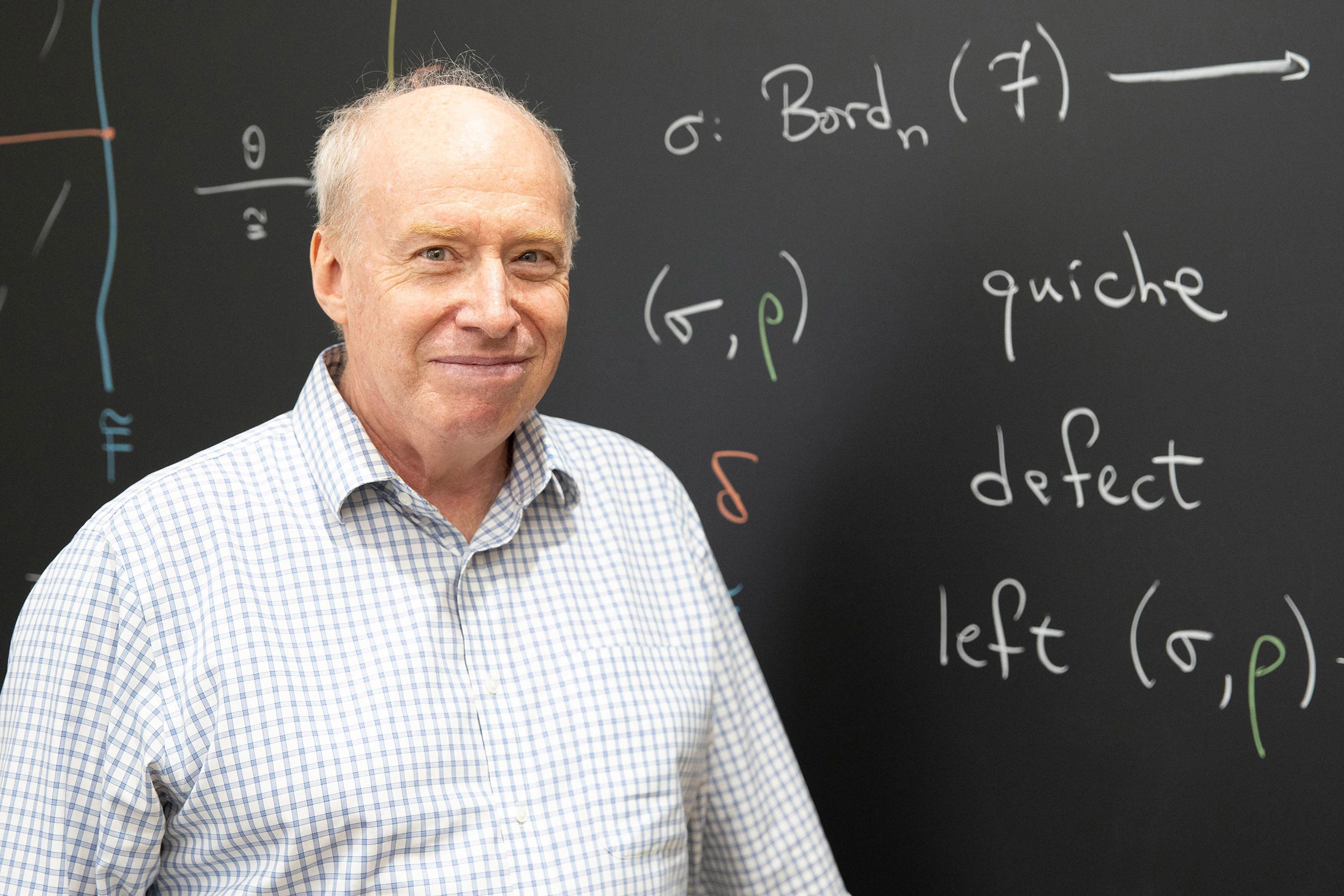
Niles Singer/Harvard Staff Photographer
Using math as bridge within disciplines
Center welcomes new director, a Harvard alum who will explore ‘beautiful, deep’ interactions between mathematics, science
Dan Freed was as serious about perfecting his skills as a trombone player as he was about solving partial differential equations in the late 1970s. The math concentrator got special dispensation from then-Faculty Dean Raoul Bott — a famous mathematician and, later, a friend — to practice in the Dunster House senior common room, “which was my absolute favorite practice room, because the acoustics made me sound much better.”
Marrying the beauty found in mathematics and art continued as a theme throughout Freed’s life. And though his passion for music has never waned, it was mathematics he chose as a career.
This fall, Freed returns to Harvard as the Shiing-Shen Chern Professor of Mathematics and director of the Center of Mathematical Sciences and Applications, a multidisciplinary research center. Most recently, Freed was on the mathematics faculty at The University of Texas at Austin.
Freed took the reins of the CMSA from inaugural director Shing-Tung Yau, a longtime Harvard mathematics professor and Fields Medal recipient. Housed within the Faculty of Arts and Sciences since 2013, the center is a fusion point for mathematics, statistics, physics, and related sciences. It hosts a variety of seminars, workshops, conferences, and other events that showcase the role of mathematics in fields such as computer science and biology, besides serving as an academic home for faculty and postdoctoral researchers.
Breaking down traditional barriers within disciplines and using mathematics as a bridge between them is a fundamental element woven throughout all work at the center.
“When people outside mathematics use mathematics, they don’t see the walls that we sometimes see within mathematics,” Freed said. “And in the same way, when we’re thinking about physics, we don’t see the walls between subdisciplines that physicists sometimes see … Each of us has our base in our own field, but then when we interact, we shed light on each other’s fields.”
Freed is a self-described geometer who has spent many years thinking about physics, although he is not himself a physicist. His work has sought geometric answers to questions asked by theoretical physicists, be they mysteries of quantum field theory, string theory, or condensed-matter theory.
“One of the strengths of mathematics is conceptualization of structure, which consolidates many examples into an abstract framework that applies in new situations,” Freed said. “There are new structures coming from physics that apply to problems in mathematics — new problems that lead to new connections that weren’t anticipated. It’s a beautiful, deep, two-way interaction.”
One example of an unexpected cross between math and physics lines: Several years ago, Freed and collaborator Mike Hopkins, chair of the Department of Mathematics, became curious about geometric descriptions of phases of matter — solid, liquid, and gas. Different phases are characterized by differences in shape and volume.
They came up with a formula for computing all possible “invertible” phases in all dimensions and for all symmetry types. This work could carry implications for new discoveries in condensed-matter physics, which underlies various modern materials and information technology devices.
Freed hopes to continue the center’s existing legacy, while encouraging new questions and collaborations in emerging fields and directions. Among them are the role of mathematics in artificial intelligence, and vice versa.
He is equally energized by his interactions with students, particularly as he teaches a new course of his own devising, the yearlong “Quantum Theory from the Geometric Viewpoint.” The graduate-level course is aimed at those with a strong math background who want to engage with complex physics theories. “We will use more math than they know,” he said. “But that’s OK. I want them to learn to live with the feeling of not having the completely solid ground under your feet.”
And maybe, in the midst of his full teaching course load and his leadership of the center, he’ll find time to pick up the trombone again. But it’s been a while. “That would be nice,” he says.
The math center recently hosted its ninth annual Conference on Big Data, featuring speakers from Harvard, MIT, Northeastern, and elsewhere. An upcoming event, “Mathematics in Science: Perspectives and Prospects,” will be held Oct. 27-28 at the Harvard Science Center. Register at the link.




